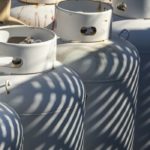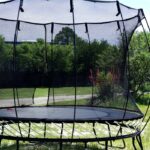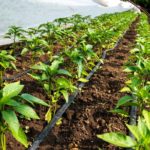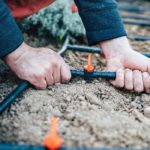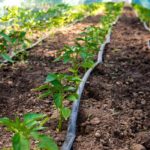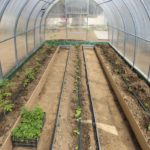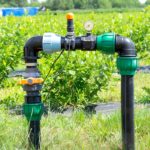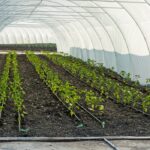Choosing the right kind of irrigation system for your yard or garden requires careful consideration and research. You need to think about costs, application, life span, and, ultimately, whether the system is worth it. Many homeowners are hesitant when it comes to installing the drip irrigation system because they just aren’t sure whether it’s a viable investment.
A drip irrigation system is worth the cost for gardeners looking for a convenient and efficient method to water their garden or small yard. Although the initial installation of can be costly, drip irrigation can reduce energy costs by up to 50% and increase water efficiency by almost 70%.
A drip irrigation system usually does a great job of keeping your gardens healthy and happy. It’s also pretty easy to control and maintain. Let’s take a closer look at this system’s advantages and disadvantages to find out if drip irrigation is suitable for your garden — and your budget.
Is a Drip Irrigation System Worth It?

A drip irrigation system (on Amazon) is an excellent option for people who want to save both time and money while ensuring the health of their plants. It ensures an even distribution of water and reduces the loss of water due to evaporation.
Although the initial cost of installing a drip irrigation system can be a bit high, it can help you save on water bills and energy costs in the long run. It’s important to note that this system may not be the best fit for all homes; however, it’s ideal for smaller gardens and people who take water conservation quite seriously.
Installing a drip system is a bit more complicated compared to using a sprinkler or hand-watering your plants. You’ll need to customize the system according to the layout of your garden and fulfill the unique watering needs of your plants. This can be a bit intimidating if you aren’t familiar with basic irrigation methods.
What Are the Advantages of Drip Irrigation?
The drip irrigation system is considered one of the most effective methods of irrigation. It’s used by gardeners all over the world due to the following benefits:
Efficient Water Use
The traditional methods of irrigation often cause significant water waste due to run-off and evaporation, especially when you use overhead sprinklers. Drip irrigation, on the other hand, can reduce overall water usage by almost half.
Prevents Weed Growth
The concentration of water in this system for specific plants prevents weeds from germinating near the plants, as there’s hardly any extra water for them to grow. The retention of water at the soil level also ensures reduced water loss due to evaporation and wind.
Consistent Watering Schedule
The drip irrigation system makes it easy to regularly water your garden according to its specific needs. The hands-off nature of this system means that you can program it to run during cooler hours every 1 to 3 days, or as desired.
Prevents Underwatering and Overwatering
It’s quite impossible to know the amount of water you’ve applied to your garden when you’re watering manually using a hose. On the other hand, with drip irrigation there’s hardly any confusion since water is applied after calculating precise flow rates and volumes.
Healthy Root Development
Strong root growth is possible when roots are watered gradually and thoroughly, rather than more frequently in short bursts. That’s why plants can better develop healthy roots in drip irrigation.
Even Distribution of Moisture
Because the drip irrigation system’s emitters and tubes are spread around the plant, there’s an even distribution of water. This provides the healthy soil environment that’s essential for optimal growth. The absence of drought-inflicted or muddy areas in your garden allows you to grow healthy plants.
Prevents Fungal Diseases
This system delivers water directly to the roots, keeping the moisture away from the foliage. This helps prevent fungal diseases since there’s minimal water contact with the leaves and stem of the plant.
Helps the Soil Retain Essential Nutrients
Watering the plants with traditional methods can cause soil runoff, which can leach key nutrients away from the plant roots. In drip irrigation, there’s less runoff, the ground can retain most nutrients, and groundwater pollution is kept to a minimum.
Delivers Fertilizers and Treatments
The drip irrigation system is a convenient way to deliver fertilizers to plant roots, leading to reduced costs and healthier plants over time.
Can Be Customized
The drip irrigation system can be customized to fit your gardening needs. This system is suitable for raised beds, shrubbery, containers, as well as vegetable rows. It also offers flexibility to gardeners, as you can add tubing (on Amazon) and emitters (also on Amazon) as your plants grow and spread.
Are There Downsides to Drip Irrigation?

Although there are many benefits of the drip irrigation system, it also comes with a few disadvantages:
Risk of Improper Installment
Improper installation of the drip system can result in poor root development. It can also cause the plants to die. For instance, installing too few emitters or looping the tubing too wide around the plants can create drought-like conditions. To find moisture, the plants may resort to shallow growth and dieback.
Regular Maintenance
Installing filters on your irrigation system can prevent debris from clogging the tubes, but you’ll still need to perform periodic flushing to prevent mineral buildup. Any sort of blockage can cause water pressure buildup within the tubing and disrupt your whole irrigation system. You’ll need to check all the emitters regularly to ensure there aren’t any blockages.
Tripping Hazards
The tubing snaking around your garden can also prove to be a tripping hazard. You’ll need to use stakes (on Amazon) over the tubing to prevent accidental falls. You can also cover the tubing with mulch. This will not only prevent tripping accidents but it will also stop your irrigation system from becoming too much of an eyesore.
Potential Damage by Rodents and Power Tools
Rats and rodents can chew the drip irrigation tubing and damage your system. You’ll also have to be careful when using power tools such as lawnmowers and edgers near your drip tubing, as they can easily cut into the system.
UV Rays Can Reduce the Lifespan of Drip Tubes
Exposure to the ultraviolet (UV) rays of the sun can decrease the lifespan of drip irrigation tubes to around 5 years. Covering the tubing with mulch can help increase the service life of these tubes to around 20 years.
Who Is Drip Irrigation For?
The drip irrigation system is an efficient and versatile irrigation method; however, it may not be worth installing in all instances. The value of this system depends on the design of the yard, types of plants, water source, etc. Let’s look at each application separately to determine this system’s effectiveness:
Homeowners With Gardens
A drip irrigation system is highly suitable for people who have a small yard or want to water individual plants. It’s also a great option for people living in water-conscious areas. As a homeowner, you can use this system in your perennial or vegetable gardens as well as to water shrubs and trees.
Large Properties
The drip irrigation system is not really a feasible choice for people with especially large fields. The initial cost of installing this system over a large area can be quite high. This system is also not suitable to water large areas of grass.
Farmers
This system is also very beneficial in commercial nurseries and farm operations. However, it’s mostly used with crops that have a high yield. Most farmers don’t use the drip system since it’s relatively expensive.
Does Drip Irrigation Conserve Water?
With water becoming a scarce resource, households need to reduce water use as much as possible. Almost 30% of all water used by families is utilized for outdoor purposes, and a large amount of this water is used to irrigate gardens and lawns.
That’s why if you want to conserve water and still have a lush green lawn and a vibrant flowerbed, you’ll need to look for methods that will help you reduce your water consumption. Almost half of the water used outdoors is utilized to irrigate gardens and lawns, and around 50% of that is lost due to improper and inefficient watering techniques.
For instance, watering the lawn in the afternoon, when the sun is shining brightly overhead, leads to a large amount of water evaporating before it can reach the roots of the plants.
This is where drip irrigation comes in. This system delivers water to your plants while reducing the amount of water used. Through a complex network of tubing and emitters, the drip irrigation system delivers water drop by drop to the plant’s root zone.
Compared to the sprinkler system, a properly-installed drip irrigation system can reduce water usage by almost 70%. This system helps your plants to grow healthy and quickly, as water and nutrients are delivered directly to the roots.
The reduction in water usage also helps to save money. According to one estimate, it costs a homeowner around $50 every month to irrigate a 75×100-foot lawn. With drip irrigation, water usage is reduced by at least 50% — that means that about $25 could be saved every month for the same lawn.
Is Drip Irrigation Energy Efficient?
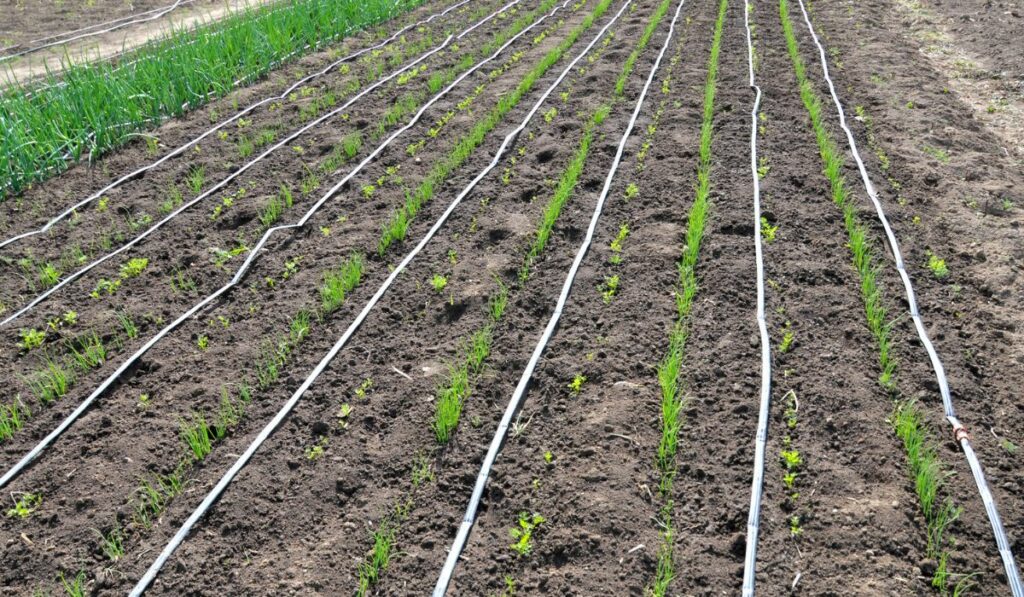
The drip irrigation system helps to cut down energy costs by almost 50% when compared to other high-pressure, high-energy irrigation systems. The energy required in an irrigation system is directly proportional to the level of pumping required.
In the drip irrigation system, water is applied to the surface of the soil, which means that the amount of vertical lift needed is reduced. Also, this system delivers a small and focused application of water to the plant roots, which uses less pressure, around 8-20 psi. Higher pressure alternatives such as sprinkler systems, meanwhile, require pressure around 45-70 psi.
How Much Does It Cost to Install Drip Irrigation?
When you undertake the installation of a drip irrigation system as a DIY project, the average cost of watering 100 feet comes to around $80-$100. However, if you have this system installed professionally, it can cost you around $300.

